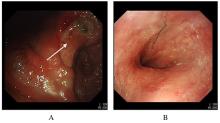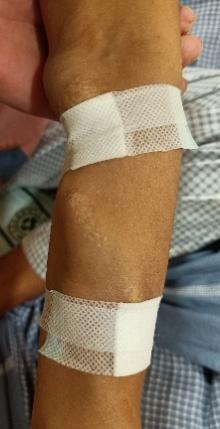吉林大学学报(医学版) ›› 2022, Vol. 48 ›› Issue (2): 487-492.doi: 10.13481/j.1671-587X.20220227
长期透析患者导管相关性血流感染并发上消化道出血致感染性休克1例报告及文献复习
- 延边大学附属医院肾病学科,吉林 延吉 133000
Septic shock caused by catheter-related bloodstream infection complicated with upper gastrointestinal bleeding in patient with long-term dialysis: A case report and literature review
- Department of Nephrology,Affiliated Hospital,Yanbian University,Yanji 133000,China
摘要: 分析长期透析患者导管相关性血流感染(CRBSI)并发上消化道出血(UGB)致感染性休克等并发症的临床特点、诊治过程及应对策略,以提高临床工作者对处理CRBSI并发UGB致感染性休克等并发症的认识。 收集1例CRBSI并发UGB患者的临床资料,分析患者临床表现、辅助检查、治疗方案和预后情况,并进行相关文献复习。 患者,男性,57岁,因规律血液透析治疗1年,排黑便2周,发热3 d入院。患者入院后出现高热伴有寒战,意识模糊,血压降低,无尿,降钙素原超过上限等。主要诊断为慢性肾脏病5期,长期透析CRBSI,UGB,感染性休克。入院后立即给予抗休克和经验性抗感染等治疗。同时行导管血、外周血培养和药敏试验,结果回报后,调整抗生素用药方案,并拔除长期透析导管,控制UGB,护肾,改用动静脉内瘘(AVF)血液透析、对症及支持治疗。18 d后患者好转出院。 CRBSI并发UGB严重危及患者生命健康,为改善预后,建议长期颈内静脉置管血液透析患者及早建立AVF通路。若病程中出现感染性休克等严重并发症,可在抗休克同时行经验性抗感染治疗,并在治疗过程中调整治疗方案。另外,重视维持性血液透析患者UGB发生风险十分必要。
中图分类号:
- R692.5





